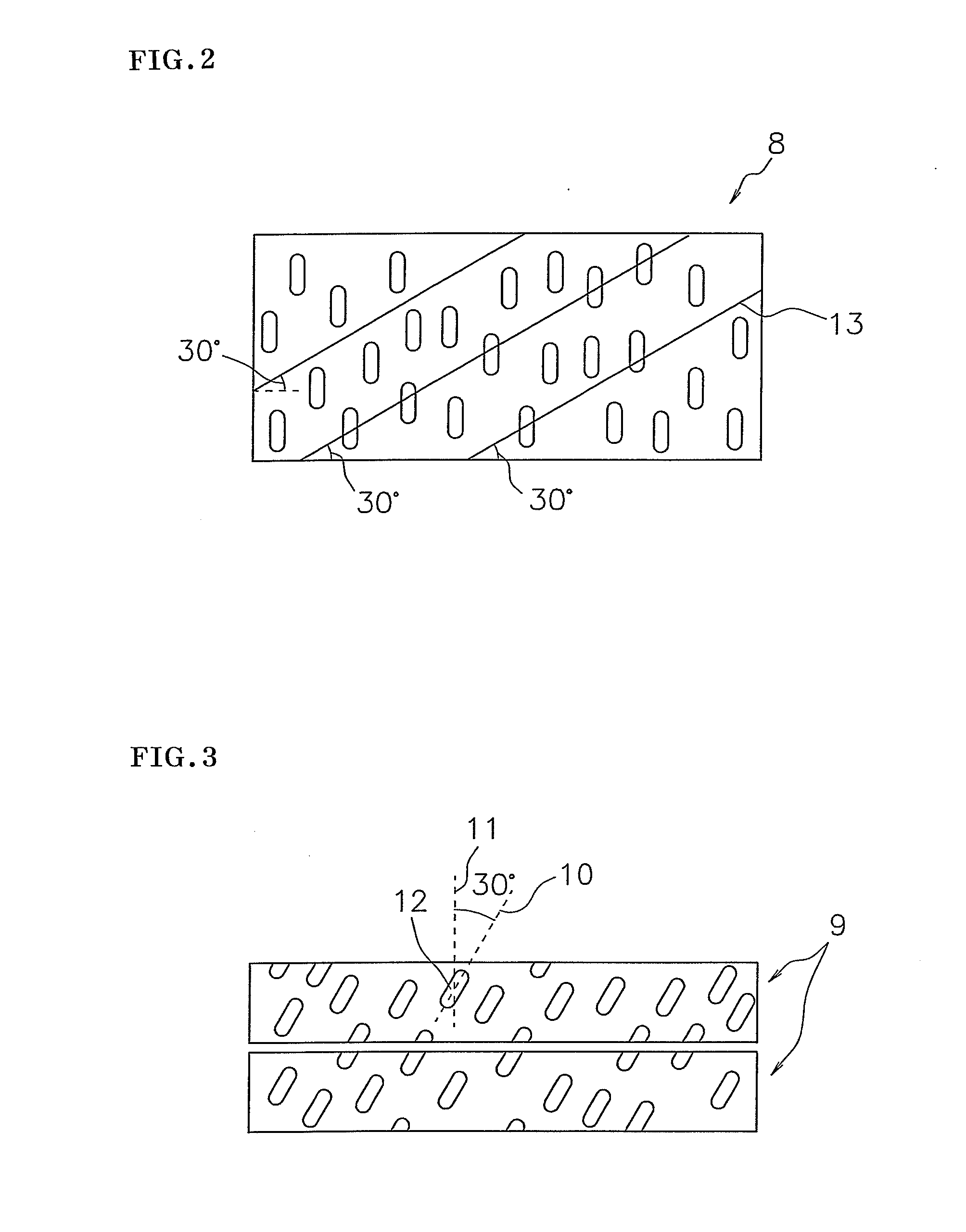Polishing pad
a technology of polishing pad and surface, which is applied in the field of polishing pad, can solve the problems of difficult to suppress and achieve the effect of effectively suppressing the occurrence of scratches and high planarization property
- Summary
- Abstract
- Description
- Claims
- Application Information
AI Technical Summary
Benefits of technology
Problems solved by technology
Method used
Image
Examples
case 1
1) Case 1
[0054]In the casting step, about 50 volume % of a foaming reaction liquid is injected into a mold of which one side or an opposite side is movable, and the upper surface of the mold is then covered with an upper lid to clamp the mold. It is preferable that vent holes for discharging an excessive foaming reaction liquid when the mold is compressed are formed in the upper lid of the mold. Thereafter, while the foaming reaction liquid is heated to be reacted and cured in the curing step, the side of the mold is moved to compress the mold, and the state is held until the composition does not flow. The composition is preferably compressed to 50 to 95% of the original horizontal width, and more preferably 80 to 90%. The composition is preferably compressed so that the excessive foaming reaction liquid is sufficiently discharged from the vent holes. In this case, the long axis of each of the oval cells is roughly perpendicular to the moving direction of the side surface of the mol...
case 2
2) Case 2
[0055]In the casting step, about 50 volume % of a foaming reaction liquid is injected into a mold, and the upper surface of the mold is then covered with an upper lid to clamp the mold. It is preferable that vent holes for discharging the excessive foaming reaction liquid when the mold is compressed are formed in at least one side surface of the mold. Thereafter, while the foaming reaction liquid is heated to be reacted and cured in the curing step, the upper lid and / or lower surface of the mold is moved to compress the mold, and the state is held until the composition does not flow. The composition is preferably compressed to 50 to 98% of the original height, and more preferably 85 to 95%. The composition is preferably compressed so that the excessive foaming reaction liquid is sufficiently discharged from the vent holes. In this case, the long axis of each of the oval cells is roughly perpendicular to the moving direction of the upper lid or lower surface of the mold.
case 3
3) Case 3
[0056]In the casting step, a foaming reaction liquid is injected in an amount capable of forming a space into a mold, and the upper surface of the mold is then covered with an upper lid to clamp the mold. Holes for decompressing the inside of the mold are formed in the upper lid. Thereafter, while the foaming reaction liquid is heated to be reacted and cured in the curing step, the inside of the mold is decompressed, and the state is held until the mixed solution does not flow. The composition is preferably compressed to 90 to 30 kPa, and more preferably 90 to 70 kPa. In this case, the long axis of each of the oval cells is roughly parallel to the height direction of the mold.
PUM
| Property | Measurement | Unit |
|---|---|---|
| thickness | aaaaa | aaaaa |
| depth | aaaaa | aaaaa |
| diameter | aaaaa | aaaaa |
Abstract
Description
Claims
Application Information
 Login to View More
Login to View More - R&D
- Intellectual Property
- Life Sciences
- Materials
- Tech Scout
- Unparalleled Data Quality
- Higher Quality Content
- 60% Fewer Hallucinations
Browse by: Latest US Patents, China's latest patents, Technical Efficacy Thesaurus, Application Domain, Technology Topic, Popular Technical Reports.
© 2025 PatSnap. All rights reserved.Legal|Privacy policy|Modern Slavery Act Transparency Statement|Sitemap|About US| Contact US: help@patsnap.com



